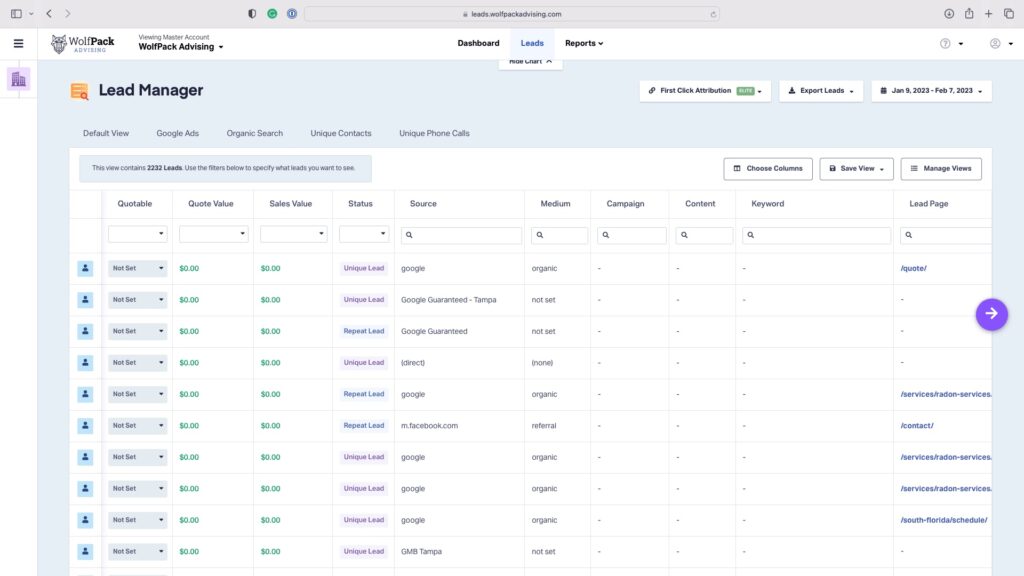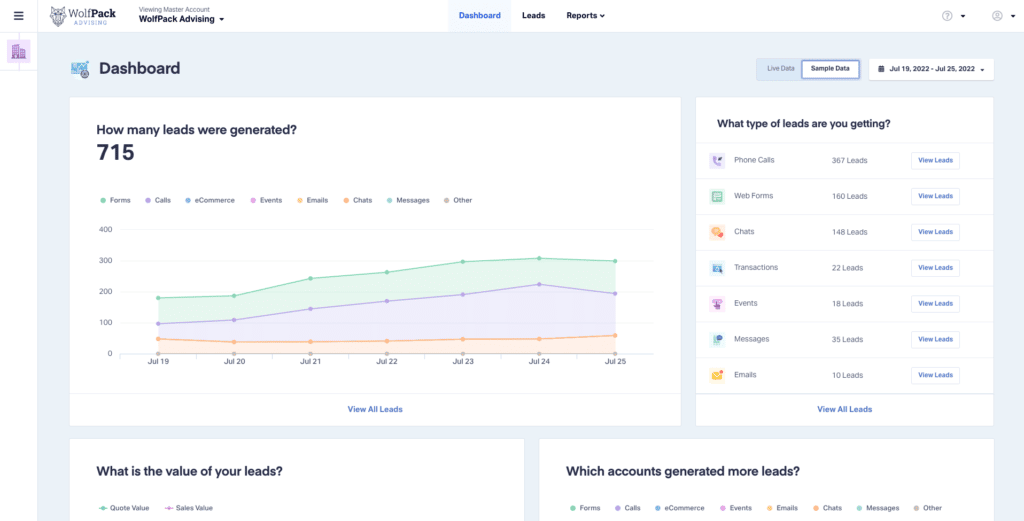Last updated on January 3rd, 2025 at 10:14 pm
If you are running any type of digital marketing ad campaign, it’s critical to track your return on investment (ROI). Many businesses want to know their actual ROI, but only a small percentage actually know their return on investment. So how do you track your ROI? Insert dynamic call tracking.
Dynamic call tracking is a marketer’s magical savior to easily find the ROI of any digital marketing campaign where leads come through calls and texts. Let’s talk about it.
What Is Dynamic Call Tracking?
First off, what is dynamic call tracking? The latter end of the phrase, call tracking, refers to tracking calls and text messages. This is completed by simply recording the calls and texts into a database. Dynamic call tracking, though, refers to Dynamic Number Insertion (DNI) where call tracking numbers (recorded lines) are swapped on a website when a new user arrives on the website.
We will break down DNI in more detail a little further down. For now, let’s break down how dynamic call tracking works.

How Does Dynamic Call Tracking Work?
Dynamic call tracking works by showing an assigned call tracking number for each user that arrives at a website. If that user were to call the number listed, that call tracking number could be paired with that user’s information on how they came to the website and additional details.
Here’s a breakdown of the information that can be paired when a user calls a tracking number:
- Source – where the user came from (i.e. Google Organic, Google Ads, Facebook, etc.)
- Medium – how the user arrived (paid traffic, organic, social)
- Campaign – a campaign name assigned by a marketer using UTM tags
- Content – what content the user saw in the ad
- Keyword – the keyword the user searched to find the business
- Lead Page – the page the user called from
- Landing Page – the page the user first landed on
- User-Based Data (IP Address, Browser, Operating System, and Device)
Ultimately, call tracking can help with your customer journey management with all of the information! So, now that we know what call tracking is, how are numbers inserted onto a webpage to track this information? To answer that, we need to understand Dynamic Number Insertion.
What Is Dynamic Number Insertion (DNI) & How Does It Work?
Dynamic Number Insertion is practically the same thing but mainly references how the number is inserted onto a webpage. DNI is completed by using javascript. The script runs by swapping a pre-designated number (usually the business’s main phone number) with a call tracking number once a new user arrives on the webpage.
That call tracking number is now locked to that user and their session with the website. However, if the user were to leave and come back, they would be assigned a new number.
Dynamic number insertion uses a group of numbers (often referred to as a pool) that are constantly cycled through and used as new users arrive at a site.
Let’s discuss some pros and cons of dynamic call tracking and DNI.

Pros Of Dynamic Call Tracking
There are many pros to call tracking.
- Tracking Return on Investment – With call tracking, you can find exactly where leads are coming from and assign sales values to those calls to find your ROI for any campaign easily.
- Tracking Sales Conversions – Now you can get a clear picture of your team’s effectiveness in converting sales calls by seeing how many opportunities there were versus how many opportunities were closed into sales.
- Grading Sales Performance or Training – If you have an office or sales team, you can listen to call recordings to grade their effectiveness in converting a lead. You can also use the recording as training material for new office employees.
- Lead Quality – Since you know which leads are coming from which advertisements, marketers can tell if a campaign has good lead quality or not.
- Using Call Metrics – Call tracking gives you so much information on where callers are, how they got to your website, and so much more that you can use the call metrics to make business decisions and adjustments.
So there are a lot of pros to using dynamic call tracking, but what are the cons?
Cons Of Dynamic Call Tracking
There are really only a few cons. Let’s take a look.
- Additional Cost – Tracking and recording the calls will be an additional cost to the business.
- Different Numbers – By far, the biggest con is knowing that customers could have saved a different number for your business. If you are a small, local business, this can hinder your marketing power for having a catchy number since there are now so many numbers for your business.
Overall, if you can get past having different numbers listed on your website or used in advertisements, call tracking can be well worth the investment!

Start Tracking Your Leads
And there you have it! If you are running any type of advertisement or marketing campaign, you should use dynamic call tracking to calculate your return on investment. Not only that, but you may find some additional information through all of the added metrics tracked!
WolfPack Advising can help with your dynamic call tracking through our Lead Center. Find out more by scheduling a consultation today!


